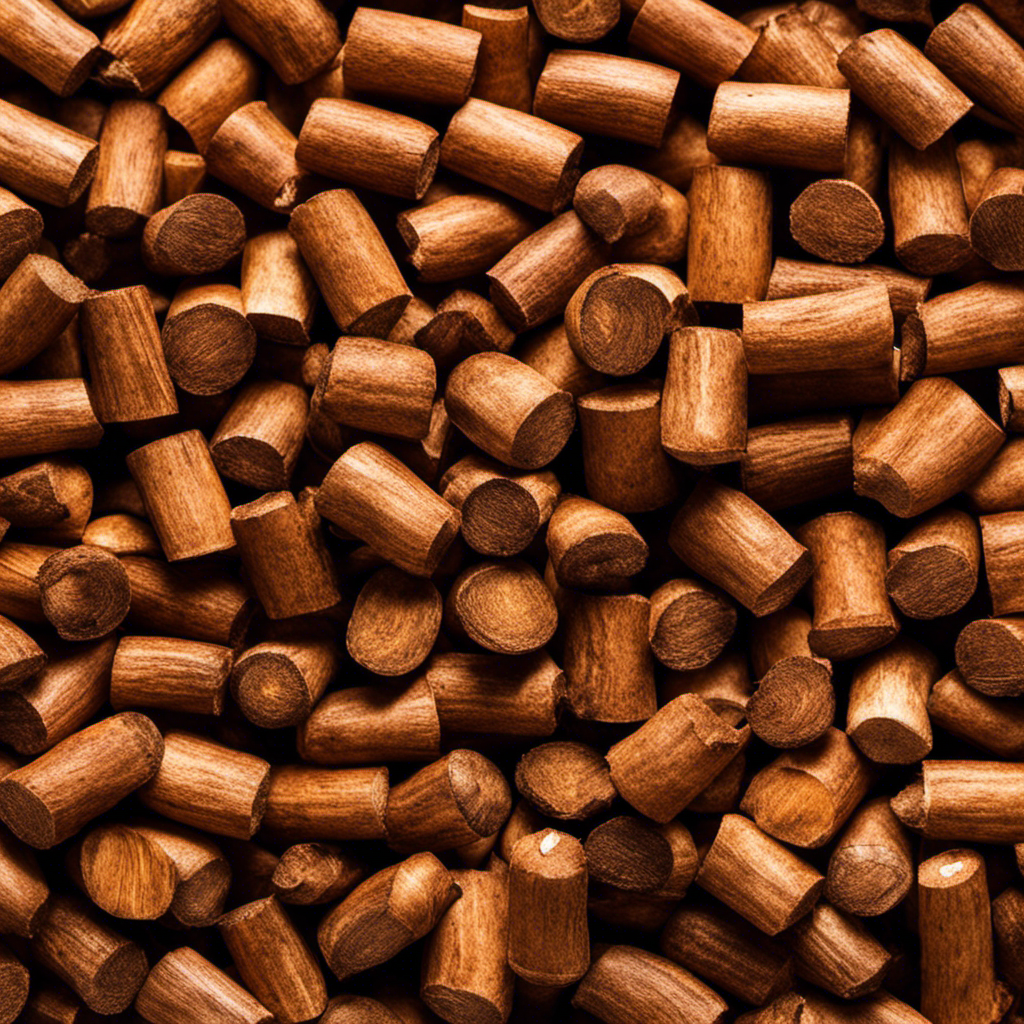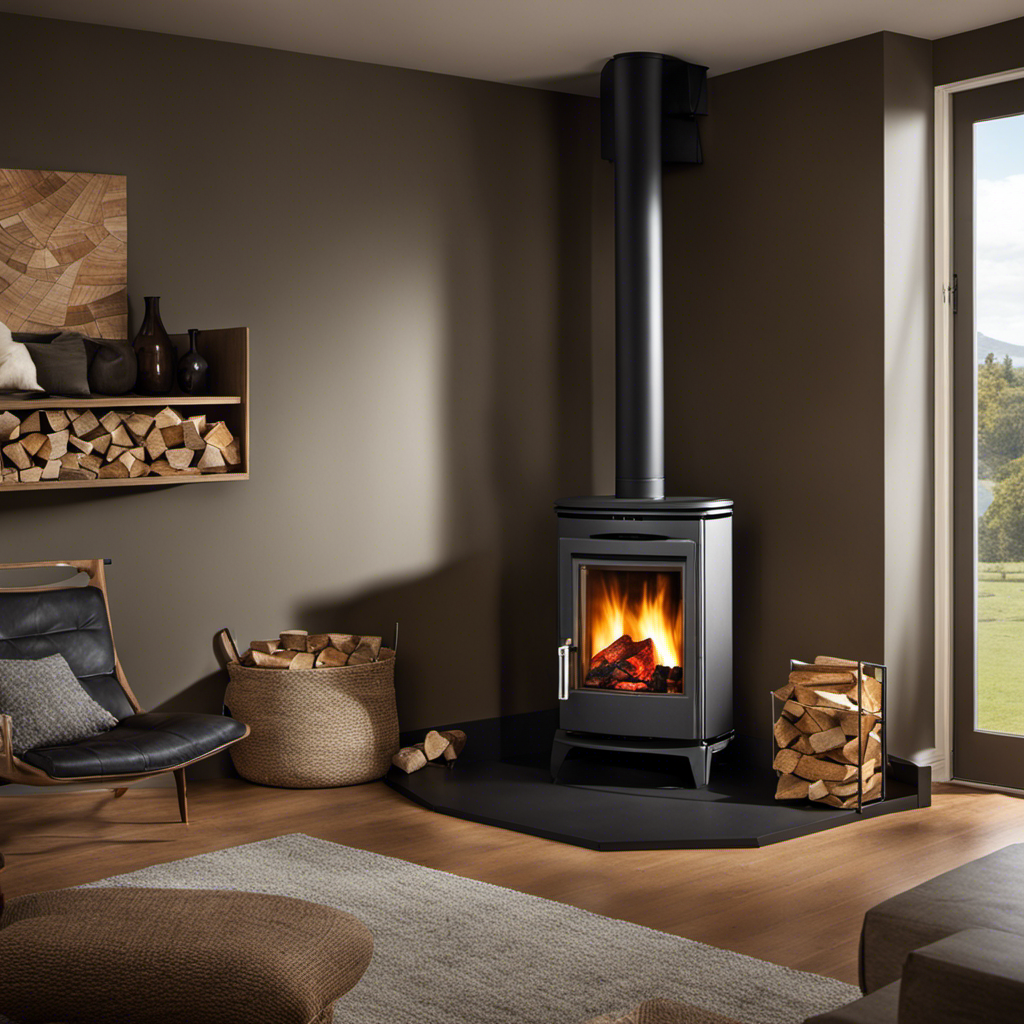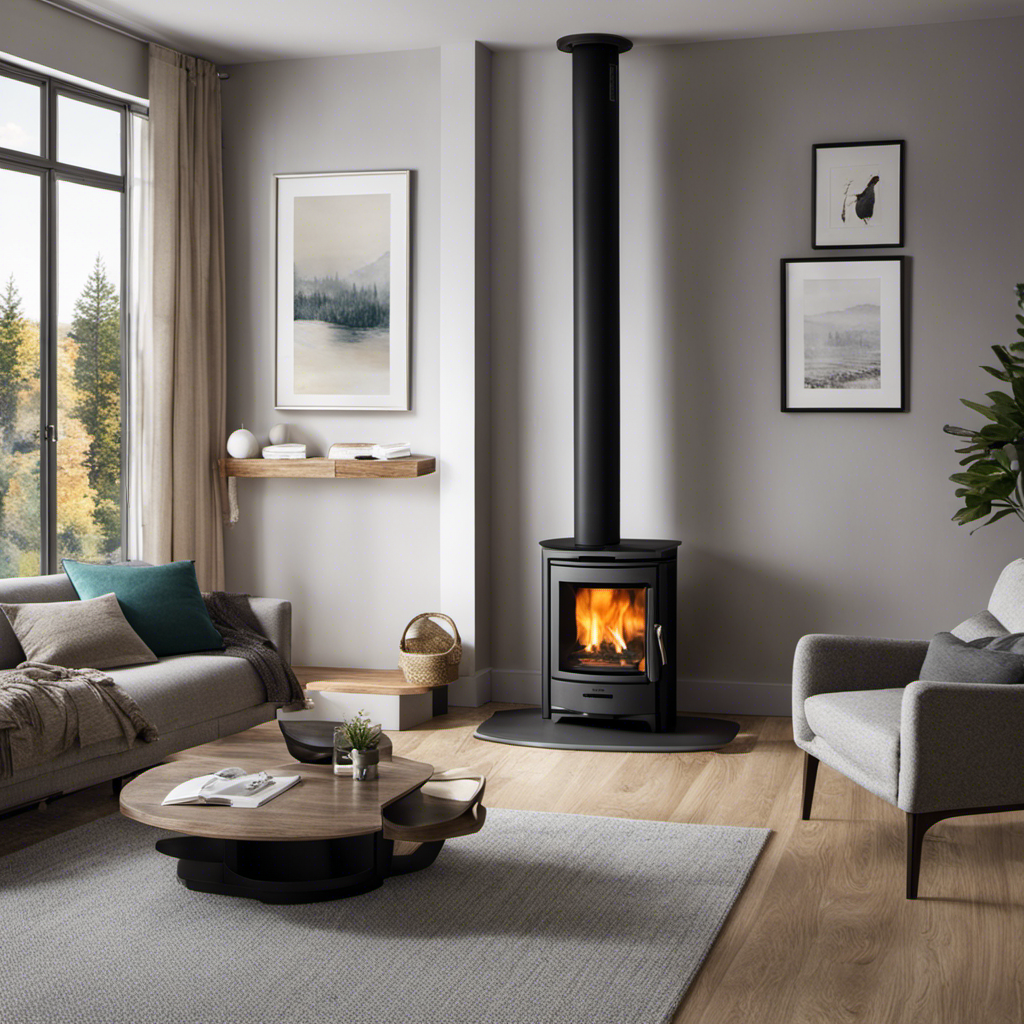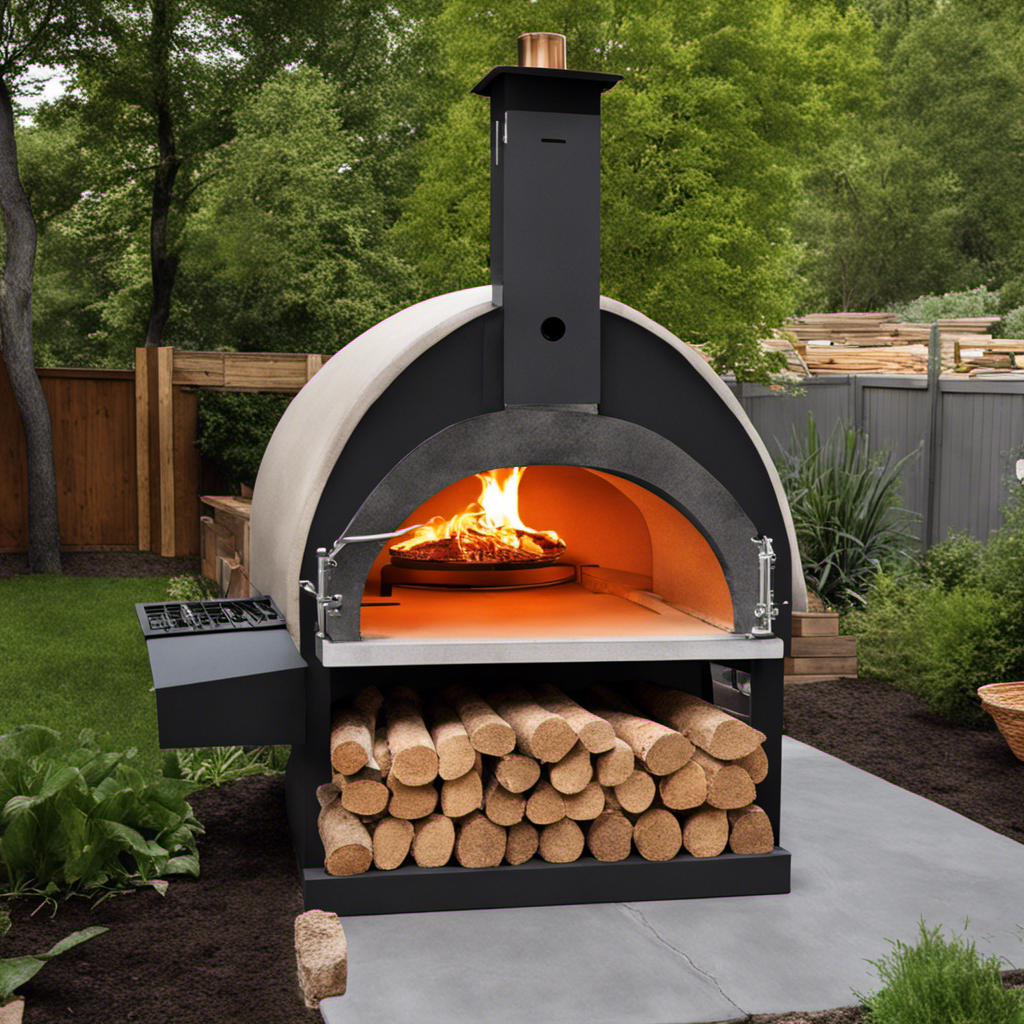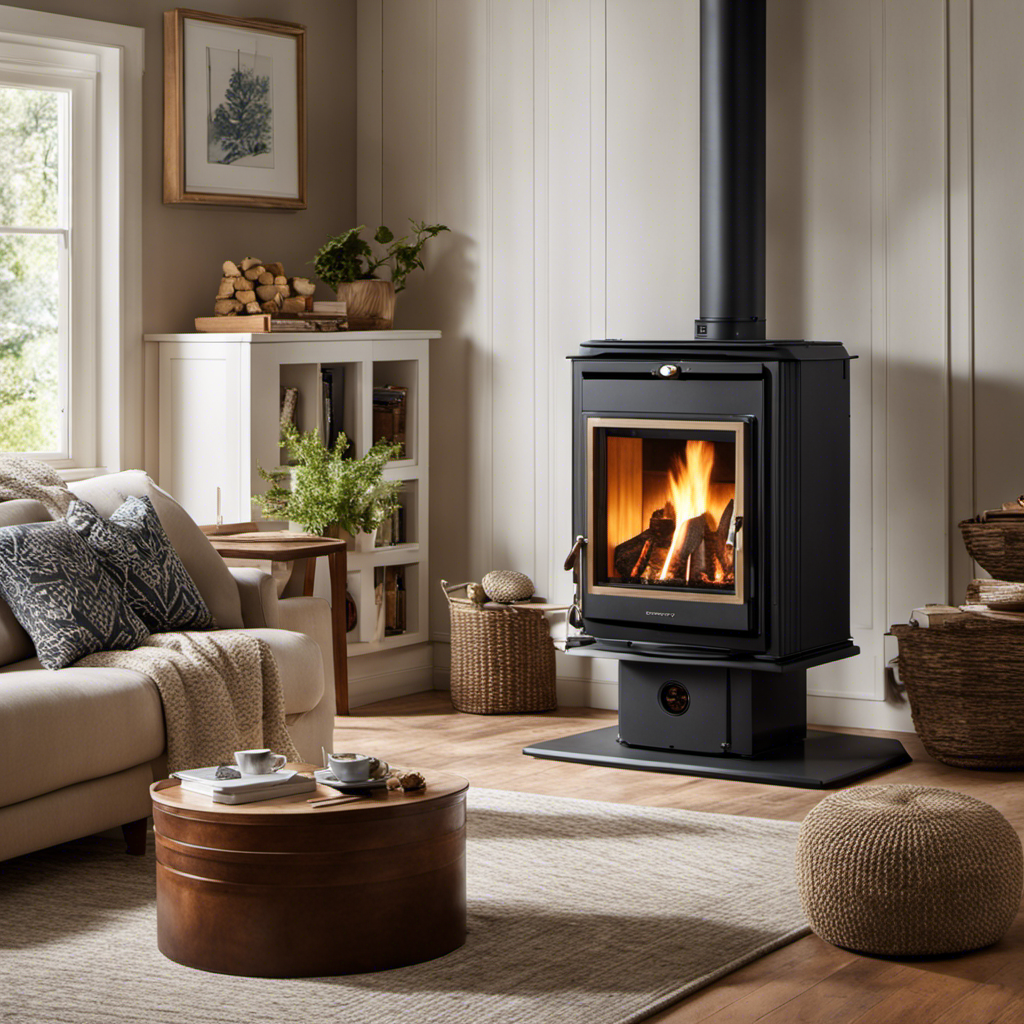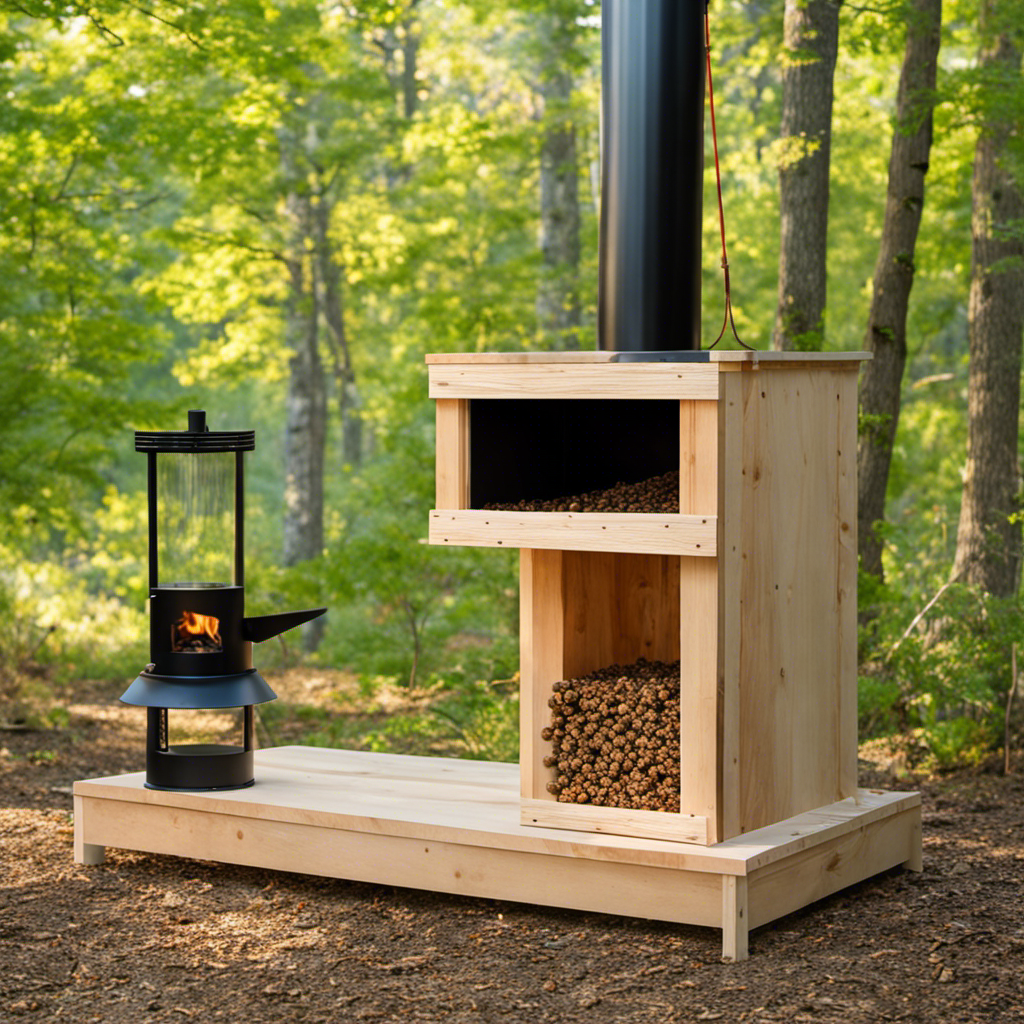Being an experienced grill connoisseur with a deep appreciation for smokey and robust flavors, my enthusiasm for smoking onions is limitless. These basic vegetables undergo a remarkable metamorphosis, becoming both charred and sweet treats, elevating them to a whole new level of gastronomic brilliance.
But here’s the thing – not all wood pellets are created equal when it comes to smoking onions. In this article, I’ll guide you through the world of wood pellets, sharing my expertise on the best kind to use for achieving that perfect smoky onion flavor.
So get ready to take your onion game to the next level – let’s dive in!
Key Takeaways
- Mesquite and hickory wood pellets are recommended for smoking onions.
- Different wood pellets offer varying intensities of flavor.
- Apple wood pellets provide a mild and sweet flavor, while cherry wood pellets offer a fruity and slightly tart taste.
- Traeger is a recommended pellet brand for smoking onions, offering a variety of flavors such as mesquite, hickory, apple, and cherry.
Types of Wood Pellets for Smoking Onions
If you’re looking to smoke onions, you should try using mesquite or hickory wood pellets. These wood pellets are known for their distinct flavor profiles and are commonly used in smoking techniques.
Mesquite wood pellets impart a strong, slightly sweet, and earthy flavor to the onions. The smokiness adds depth and complexity to the overall taste.
On the other hand, hickory wood pellets provide a rich, robust, and slightly sweet flavor to the onions. The smoky aroma enhances the natural sweetness of the onions, creating a mouthwatering combination.
When choosing wood pellets for smoking onions, it’s important to consider factors such as the intensity of flavor desired and personal preference. Other wood pellets like apple, cherry, or oak can also be used, each offering unique flavor profiles that complement the onions in their own way.
Factors to Consider When Choosing Wood Pellets for Smoking Onions
When choosing wood pellets for smoking onions, it’s important to consider factors such as flavor, burn time, and availability.
Different wood pellet types can impart unique flavors to your onions, enhancing the overall taste of your dish. Some popular options include apple, cherry, hickory, and mesquite.
Apple wood pellets provide a mild and sweet flavor that pairs well with the natural sweetness of onions.
Cherry wood pellets offer a fruity and slightly tart taste, adding a delicious twist to your smoked onions.
Hickory wood pellets, known for their strong and smoky flavor, can add depth and richness to your dish.
Mesquite wood pellets, on the other hand, provide a bold and intense flavor that can complement the savory notes of the onions.
Best Wood Pellet Flavors for Smoking Onions
To enhance the taste of your smoked onions, consider trying different flavors of wood pellets. Using flavorful wood pellets can add a unique and delicious twist to your smoking techniques.
When it comes to smoking onions, there are several wood pellet flavors that pair exceptionally well with their natural sweetness and earthy flavor. For a subtle and delicate taste, apple wood pellets are a great choice. They impart a slightly sweet and fruity aroma to the onions. If you prefer a bolder and smokier flavor, hickory wood pellets are a classic option. They add a rich and robust taste to the onions, enhancing their natural flavors. Other popular wood pellet flavors for smoking onions include cherry, mesquite, and pecan. These flavors can provide a distinct and enjoyable experience for your taste buds.
Now that you know about the best wood pellet flavors, let’s explore the popular wood pellet brands for smoking onions.
Popular Wood Pellet Brands for Smoking Onions
When it comes to smoking onions, choosing the right wood pellet brand is crucial for achieving the best flavor.
In this discussion, I will explore some of the most popular pellet brands known for their quality and performance in smoking onions.
Additionally, I will compare the flavor profiles of different wood pellets and provide recommended smoking techniques to enhance the taste and aroma of your smoked onions.
Best Pellet Brands?
One of the best pellet brands for smoking onions is Traeger. Traeger offers a wide range of pellet flavors that can enhance the taste of your smoked onions.
Here are some tips for smoking onions with Traeger pellets:
-
Choose the right flavor: Traeger offers a variety of pellet flavors, such as mesquite, hickory, apple, and cherry. Each flavor adds a unique taste to your onions, so experiment and find your favorite.
-
Preheat your smoker: Before smoking your onions, preheat your Traeger smoker to the desired temperature. This ensures even and consistent cooking.
-
Use a foil packet: To prevent the onions from falling through the grill grates, wrap them in a foil packet. This also helps to retain moisture and infuse the onions with smoky flavor.
-
Monitor the cooking time: Onions don’t take too long to smoke, typically around 30 minutes to an hour. Keep an eye on them to prevent overcooking.
Now that you know the best pellet brand and some tips for smoking onions, let’s dive into a comparison of different flavor profiles.
Flavor Profiles Comparison
If you’re looking to enhance the taste of your smoked onions, you should definitely consider comparing the flavor profiles of different pellet brands. Wood pellet selection plays a crucial role in imparting flavors to your food, and experimenting with different flavors can take your smoked onions to a whole new level.
Each wood pellet brand has its own unique combination of hardwoods, such as oak, hickory, apple, or cherry, which can greatly influence the taste of your onions. Some pellets may provide a bold and smoky flavor, while others may offer a sweeter and fruity undertone. By comparing the flavor profiles of different pellet brands, you can find the perfect match for your smoked onions, ensuring a delicious and well-balanced taste.
Now that you’ve selected the right pellets, let’s explore some recommended smoking techniques to achieve the best results.
Recommended Smoking Techniques
Now that we have explored the different flavor profiles of wood pellets, let’s dive into the recommended smoking techniques for enhancing the taste of onions. Smoking onions can add a unique depth and complexity to your dishes, and the right techniques can make all the difference. Here are some recommended techniques for smoking onions:
| Technique | Description |
|---|---|
| Cold Smoking | Exposing onions to smoke without heat for a longer period of time. |
| Hot Smoking | Smoking onions at a higher temperature for a shorter duration. |
| Indirect Smoking | Placing onions away from direct heat source to slow cook and smoke. |
| Foil Wrapping | Wrapping onions in foil to create a steamy and smoky environment. |
| Slicing Thinly | Cutting onions into thin slices to allow smoke to penetrate evenly. |
How Different Wood Pellets Affect the Flavor of Smoked Onions
When it comes to smoking onions, the choice of wood pellets can have a significant impact on the flavor profile. Different wood pellet flavors, such as hickory, mesquite, and apple, can impart unique smoky notes to the onions.
Experimenting with various wood pellet flavors allows for a range of smoking onion variations, ultimately enhancing the overall taste of the dish.
Wood Pellet Flavors
You’ll want to consider different wood pellet flavors to enhance the taste of your smoked onions. When it comes to smoking techniques, the type of wood pellet you choose plays a crucial role in infusing the onions with distinct flavors. Here are three wood pellet flavors that can elevate your smoked onion dish to new heights:
-
Mesquite: This bold and robust wood pellet flavor adds a smoky intensity that pairs perfectly with grilled onions. It creates a deep and rich flavor profile that is sure to impress your taste buds.
-
Apple: If you prefer a sweeter and milder taste, apple wood pellets are an excellent choice. They impart a subtle fruity aroma that enhances the natural sweetness of the onions, resulting in a delightful combination of flavors.
-
Hickory: For a classic, traditional smoky flavor, hickory wood pellets are the way to go. They provide a strong and distinct taste that complements the onions beautifully, creating a timeless and delicious dish.
Now that you have an idea of the different wood pellet flavors, let’s explore the various smoking onion variations to further elevate your culinary experience.
Smoking Onion Variations
To enhance the flavor of your smoked onions, consider trying different variations. Flavor experimentation is key when it comes to smoking onions. By using different smoking techniques and comparing the results, you can discover new and exciting flavors that will elevate your dishes to the next level.
One technique to try is cold smoking, which imparts a subtle smoky flavor without fully cooking the onions. This method is great for adding a hint of smokiness to salads or sandwiches.
Another technique is hot smoking, which fully cooks the onions and infuses them with a robust smoky flavor. This is perfect for incorporating the onions into hearty dishes like soups or stews.
Enhancing Onion Taste
If you want to enhance the taste of your onions, try experimenting with different cooking techniques and seasonings. Here are some ideas to get you started:
- Grilling: Char the onions on the grill to bring out their natural sweetness and add a smoky flavor.
- Caramelizing: Slowly cook the onions in a skillet with butter or oil until they turn golden brown and develop a rich, sweet taste.
- Roasting: Toss the onions with olive oil, salt, and pepper, then roast them in the oven until they become tender and slightly caramelized.
- Smoking: Infuse the onions with a subtle smoky flavor by using wood pellets in your smoker.
By using these cooking techniques, you can enhance the onion aroma and create delicious smoked onions.
Now, let’s move on to some tips for using wood pellets to smoke onions without overpowering their natural flavors.
Tips for Using Wood Pellets to Smoke Onions
When smoking onions, it’s important to choose the right wood pellet to enhance the flavor. The recommended smoking techniques for onions involve using a mild and fruity wood pellet, such as apple or cherry. These pellets add a subtle sweetness to the onions without overpowering their natural taste.
The smoky aroma from the wood pellets infuses the onions, creating a delectable flavor profile. As the onions cook slowly over the smoldering pellets, they become tender and develop a rich, smoky taste that complements a variety of dishes.
Pairing wood pellets with different onion varieties for optimal flavor is an exciting experiment. From the mild and slightly sweet Vidalia onions to the bold and pungent red onions, each variety can be enhanced by the right wood pellet, transforming them into a sensational culinary delight.
Now, let’s explore the wonderful world of wood pellet pairing with different onion varieties for an elevated flavor experience.
Pairing Wood Pellets With Different Onion Varieties for Optimal Flavor
Using the right wood pellets can greatly enhance the flavor of different onion varieties. When it comes to pairing wood pellets with different onion varieties, there are a few factors to consider. Here are some key points to keep in mind:
-
Sweet Onions: Pairing sweet onions with fruit wood pellets, such as apple or cherry, can complement their natural sweetness and add a subtle fruity note to the flavor profile.
-
Red Onions: Red onions have a slightly more pungent taste, and pairing them with stronger wood pellets like hickory or mesquite can help balance out their sharpness and add a bold smoky flavor.
-
White Onions: White onions have a milder flavor compared to other varieties. Using lighter wood pellets like oak or alder can enhance their natural taste without overpowering it.
Experimenting with different smoking techniques for onions is also essential. Whether it’s cold smoking for a longer period or using a hot smoke for a shorter time, these techniques can yield distinct results.
Exploring unique wood pellet options for smoking onions opens up a world of flavor possibilities.
Exploring Unique Wood Pellet Options for Smoking Onions
To enhance the flavor of your smoked onions, you can try experimenting with various types of wood pellets. Different wood pellets can impart unique flavors to your onions, adding depth and complexity to your dishes. When it comes to smoking onions, there are several wood pellet options to consider. Here are some popular choices and their characteristics:
| Wood Pellet | Flavor Profile |
|---|---|
| Apple | Sweet and fruity |
| Mesquite | Strong and smoky |
| Hickory | Rich and bacon-like |
| Cherry | Mild and fruity |
Each wood pellet option can complement different onion varieties and enhance their natural flavors. For example, pairing sweet Vidalia onions with apple wood pellets can create a delightful combination of sweetness and fruitiness. Alternatively, using mesquite wood pellets with robust red onions can result in a smoky and bold flavor profile. By exploring different wood pellet options and experimenting with smoking techniques, you can elevate the taste of your smoked onions to new heights.
Frequently Asked Questions
Can I Use Any Type of Wood Pellet to Smoke Onions?
I can use any wood pellet for smoking onions, but some flavors pair better. The best wood pellets for smoking onions are hickory or apple, as they complement the sweet and savory flavors of the onions perfectly.
How Long Should I Smoke Onions With Wood Pellets for Optimal Flavor?
To get optimal flavor when smoking onions, how long should I smoke them with wood pellets?
Can I Mix Different Wood Pellet Flavors to Create a Unique Flavor for Smoked Onions?
Mixing wood pellet flavors can create a unique and delicious flavor for smoked onions. However, it’s important to choose the best wood pellets for smoking onions, such as apple or hickory, to enhance the overall taste.
Are There Any Health Concerns or Risks Associated With Smoking Onions Using Wood Pellets?
There are potential risks associated with smoking onions using wood pellets, so it’s important to choose a good kind. However, smoking onions can also have health benefits, adding flavor and nutrients.
Can I Reuse Wood Pellets That Have Been Used to Smoke Onions for Other Cooking Purposes?
I can reuse wood pellets used to smoke onions for other cooking purposes. The smoky flavor they impart can enhance dishes like soups, stews, and sauces. Their earthy essence adds depth and complexity to a variety of recipes.
– Can the Same Kind of Wood Pellet Be Used for Smoking Onions and Growing Morel Mushrooms?
Yes, the best wood pellet for morel mushrooms can also be used for smoking onions. Both tasks require a specific type of wood pellet with the right characteristics to achieve the desired results. Choosing the right kind of wood pellet is crucial for both smoking and growing morel mushrooms.
Conclusion
In conclusion, when it comes to smoking onions, choosing the right wood pellet is essential for achieving the perfect flavor. Factors such as the type of wood, pellet flavor, and brand all play a role in the final result.
One interesting statistic to note is that hickory wood pellets are the most popular choice among smokers, with over 50% of users preferring its strong and smoky flavor.
So, whether you’re a seasoned smoker or just starting out, experimenting with different wood pellet options can take your smoked onions to the next level of deliciousness.

